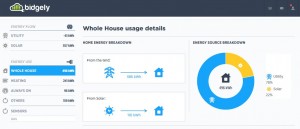Intersolar North America, 3 levels of solar trends
By Yann Brandt
 In trying to find the market story, many of us travel to the trade shows. Last week was the time to attend Intersolar North America (ISNA) in San Francisco. A three level affair featuring the finest in solar gives a look into the window of solar as made up by each of us that attended. ISNA happens every July in the same place a few weeks after the largest solar show, Intersolar Europe in Munich. We had the opportunity to speak with Markus Elsässer, the Managing Director of Solar Promotion GMBH, who puts on the Intersolar show about the main trends of this year’s show. Trends that included energy storage, balance of systems and micro-grid solutions.
In trying to find the market story, many of us travel to the trade shows. Last week was the time to attend Intersolar North America (ISNA) in San Francisco. A three level affair featuring the finest in solar gives a look into the window of solar as made up by each of us that attended. ISNA happens every July in the same place a few weeks after the largest solar show, Intersolar Europe in Munich. We had the opportunity to speak with Markus Elsässer, the Managing Director of Solar Promotion GMBH, who puts on the Intersolar show about the main trends of this year’s show. Trends that included energy storage, balance of systems and micro-grid solutions.
The trade shows peaked alongside the solar industry in 2011, where the most companies exhibited at the shows before consolidation took over. The trends of participants has also changed in the past few years. Themes have largely shifted from manufacturing and modules towards soft costs and balance of systems.
With the focus on BOS and soft costs, ISNA saw the rise of energy storage as well. Some 40 companies had energy storage in their booth this year, in addition to the almost full time conference stage educating visitors about the topic. “With US solar still showing high soft costs, some best practices from other parts of the world can be shared,” said Markus about how companies are collaborating, “The learning is in both directions, as Germany transitions to a post feed-in-tariff market, companies are looking toward finance innovation from the US to bring back to Europe.”
Energy storage was a big factor affecting floor discussions about microgrids. Spun out from the projects in Puerto Rico where solar farms had to include some storage, some financing groups have been getting comfortable with including broader technologies into solar investments. We expect this trend to continue as post-Sandy thoughts come into play or areas where energy is above $0.20/kWh and power quality is unreliable.
Intersolar North America is part of a global solar presence, with Intersolar South America happening later this year in Brazil. The global presence and trade shows creates an opportunity for international partnerships for companies looking to grow in new markets.
The conference programming grew in 2014 over past years through the partnership with ASES. This year, conference attendees had the addition of almost 40 programs to learn from through the conference collocation. The conference for Intersolar is put together by a committee of 35 members, partnerships with 10 State solar groups and an extensive contractor day put on by CalSEIA. For anyone that thinks Intersolar North America is too ‘German’, 2014 showed the learning that can be had by coming to the show. At the very least it represents the best in solar at the annual Solar Battle of the Bands!



